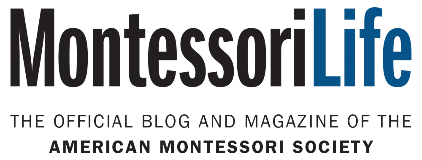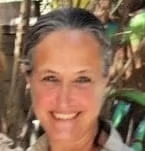“In the years since its development, tens of thousands of schools worldwide have called their programs Montessori, yet implementations vary widely, leading to confusion about what Montessori education is.”
The words above (Lillard and McHugh) get straight to the matter of defining Montessori education, while raising the question of what it means to claim fidelity to Montessori pedagogy. What makes a Montessori program authentic? Lillard and McHugh address these questions in a two-part series, “Authentic Montessori: The Dottoressa’s View at the End of Her Life” (Part 1, Part 2). From the outset, they are clear that their use of the term authentic denotes “done in the traditional or original way” (Oxford English Dictionary, 2019), and is not intended to claim that programs containing variations of Montessori’s original view are necessarily inferior. The authors discuss the characteristics of the Montessori trinity—the prepared environment, the teacher, and the child—drawing from Montessori’s books and lectures and detailing key elements of Montessori education in order “to provide a description of her view of what the system was, at her life’s end, as a benchmark from which alterations can be described or measured.”
The Montessori trinity is at the core of every teacher education and individual school program, but as suggested in the opening quotation, its implementation is inconsistent and variations exist. How do we know to what degree our classrooms and schools reflect Montessori with integrity, and by what standards is this evaluated? (Readers can learn more about this through the AMS Characteristics Papers for Infants and Toddlers; Early Childhood; Elementary; and Secondary.)
When we speak of integrity, the virtues of honesty, trustworthiness, and reliability often come to mind. In an additional and related sense, integrity describes one’s adherence to a set of principles or code of values. Given this definition, we could say that those Montessori programs adhering to the core or essential elements of the pedagogy are implemented with integrity. But are they authentic?
Another consideration is the degree to which a program reflects anti-bias, antiracist (ABAR) principles. Although this terminology was not used in Montessori’s lifetime, we know from her writing that she considered personal reflection and inner work a vital aspect of the educator’s role. As she writes in The Secret of Childhood:
But still we must be humble and root out the prejudices lurking in our heart. We must not suppress those traits which can help us in our teaching. We must check those inner attitudes and characteristics of adults that can hinder our understanding of the child.
We can understand from this passage, and others related to peace education, that Montessori would have endorsed and included in her educational approach ABAR principles, as well as those promoting diversity, equity, and inclusion (DEI). Although the parlance may be relatively new, there is nothing new about the idea that these are core values of Montessori education. We will examine these ideas further in Part Two of this series.
While some schools implement authentic programs that precisely and truly reflect Montessori’s original teachings, many others have made changes—some would say necessarily so—to curriculum and materials in the years since Montessori’s lifetime. We focus here on the question of whether Montessori with integrity may manifest in a high-quality program that might not be considered authentic in the strict definition given above.
Core Elements of Montessori Education
The Montessori Public Policy Initiative (MPPI)—a Montessori advocacy organization affiliated with the American Montessori Society (AMS), the Association Montessori International/USA (AMI/USA), and the National Center for Montessori in the Public Sector (NCMPS)—has identified the following core elements of a high-fidelity Montessori program:
- prepared environment
- materials
- uninterrupted daily work periods
- high degree of freedom
- 3-year mixed age groups
- higher adult-child ratios and group sizes
- Montessori trained teachers
Expanded descriptions of the core elements can be found at MPPI, AMS, AMI, and NCMPS. While different affiliate descriptions vary slightly, all reflect the foundational premise put forth by MPPI:
By design, authentic Montessori classrooms incorporate several core elements that work in concert with one another to optimize each child’s cognitive, social, emotional, and physical development. Because these elements are interdependent, they must all be present and well supported for a classroom to be Montessori.
Fidelity to the Core Elements
The degree to which any individual school or classroom program adheres to the specific descriptors of the core elements is highly variable and may depend on a number of factors, including but not limited to: private or public school status; degree and quality of staff and teacher training (including professional development); make-up of student population; school, district, or state policies and mandates; physical space considerations; and budget constraints. Any combination of these factors may determine the integrity of a program in terms of its adherence to its core values, whether based in Montessori pedagogy or more traditional approaches. Montessorians, like educators everywhere, face challenges beyond their control that nevertheless impact the fidelity of their programs. In Part 3, we will look more closely at these challenges, especially in terms of their impact on equity-related issues in Montessori education more broadly.
Some factors affecting fidelity of implementation are beyond the control of local administrators and heads of school. But what about those areas where schools or teachers make choices that, by definition, alter the original intent or scope of the program? The addition of supplemental materials, for example, or the exclusion of specific Montessori materials, could be considered a deviation from authenticity in its most literal definition. “This selection [of materials by the children] brought to us the conception that there must be just that amount and no more” (Montessori in Lillard and McHugh 2019). The authors interpret this to mean that “An authentic Montessori classroom includes a complete set of Montessori materials for the age level, no less and no more.” (Readers may be interested in the AMS list of suggested learning materials for each Montessori classroom level, as well as Lillard’s 2011 survey of AMS and AMI trainers regarding which materials they deemed necessary in the Early Childhood classroom. A similar survey directed at Elementary teachers and trainers could yield valuable information about perceived essential materials for the second-plane classroom as well.)
Staying with this example as it relates to the Elementary classroom, an important question is to what extent Montessori would have revised her materials given new findings in child development, cognitive science, and curriculum areas like biology, for example. We know that making adjustments based upon her ongoing observations was integral to Montessori’s methodology. As Lillard and McHugh write:
Had [Montessori] lived longer, her ideas would surely have evolved. However, as a variety of interests have changed the Montessori system in a variety of ways … we cannot know how she would have changed her methodology …
… nor her materials, for that matter. Given updates from the field of biology on the classification of living things, for example, does the omission of the old classification charts and the addition of a Tree of Life chart render the classroom inauthentic? Conversely, some aspects of the curriculum may be inauthentic but implemented with more integrity to the extent that they are true to new findings in science and history. Moreover, there may be a need in some classrooms to update materials that are culturally exclusive. We will look more closely at the implications of using materials that are neither culturally representative nor historically accurate in Part Two of this series.
How are teachers and trainers meant to evaluate whether such alterations to the materials are consistent with the integrity of the curriculum (which itself would need updating given this example)?
Evaluating Fidelity of Implementation
One way to evaluate alterations is to check in with the standards as articulated by Montessori organizations in the resources given in this article. Regarding materials, for example, the following descriptors and guidelines are in place:
- The materials follow a logical, developmentally appropriate progression that allows the child to develop an abstract understanding of a concept (AMS).
- A full complement of carefully sequenced and scaffolded Montessori materials allows children to build skills, knowledge, confidence, and mastery of academic concepts consistent with widely accepted educational standards such as Common Core (MPPI).
- The full complement of Montessori materials is available in every area, representing the majority of materials on all shelves.
It is important to note that none of these guidelines formally state that Montessori materials must be culturally relevant, appropriate, and anti-bias, antiracist. It falls to individual teachers and school leaders, therefore, to ensure that classrooms are providing proper representation in their materials, honoring the neurodiversity, race, gender identity, religion, national origin, etc. of all our students.
Readers are also directed to the AMS School Accreditation Standards— a tool that can be used to assess a school’s progress toward Montessori implementation. The AMS School Accreditation Standards include nine standards that include Teaching and Learning, Documenting and Using Results, and Personnel standards that focus on the Montessori components of education. Standards and guidelines from reputable Montessori organizations like AMS and AMI/USA, can support teachers with information on essential elements and core components of Montessori education. Referring to these when questions arise can help teachers feel more confident in their efforts to implement Montessori with integrity.
Parents, too, may need to be directed to tools with which they can evaluate Montessori programs they may be considering for their children, as well as new teachers seeking employment. Accreditation by AMS or AMI/USA bestows a high level of recognition and is “a highly visible indicator of [a] school’s quality.” To the extent that a program is accredited by a recognized and respected Montessori organization, a high degree of fidelity can be expected. Accreditation and integrity are overlapping values. Additionally, AMS accreditation is the only Montessori school accreditation that is recognized by the National Council for Private School Accreditation and the International Council Advancing Independent School Accreditation.
Final considerations
Alterations to Montessori’s original view may be the rule rather than the exception in existing programs, and there is a range of opinions–even dissent–regarding whether these altered programs are inferior or superior to the original. Lillard and McHugh point out that this a matter for further research, and they “urge empirical study of the variations to determine whether they improve or detract from the system bequeathed by Dr. Montessori.” One such study, for example, examines whether removing supplementary materials from Early Childhood classrooms changes child outcomes (Lillard and Heise, 2016).
Finally, it is useful to remember that “each school’s path toward full implementation is unique, and frequently characterized by factors beyond the control of the school organization.” The same can be said of individual teachers. Any school leadership body or teacher can refer to the AMS Fundamental Tenets tool to evaluate progress on the path to high-fidelity implementation of their Montessori program.
In the end, perhaps, Montessori with integrity describes any program whose practitioners are committed to the core components and essential elements and are sincerely working toward faithful adherence to and implementation of Montessori philosophy. And while these programs might not be authentic by strict definition, commitment and intention go a long way toward implementing Montessori with integrity, in the true sense of the word.


